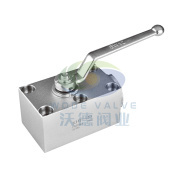News
Understanding Hydraulic Ball Valves: Essential Insights for Industrial Applications
Time:
Feb 17,2025
Hydraulic ball valves are vital components in various industrial applications, particularly within fluid control systems. Their primary function is to regulate the flow of fluids, ensuring optimal performance and efficiency in machinery and processes. Understanding the intricacies of hydraulic ball valves can significantly benefit professionals working in industries such as manufacturing, oil and gas, water treatment, and beyond.
A hydraulic ball valve operates using a spherical disc, known as a "ball," which has a hole through its center. When the valve is open, the hole aligns with the flow direction, allowing fluid to pass. Conversely, when the valve is closed, the ball rotates to obstruct the flow completely. This simple yet effective mechanism provides a reliable means of controlling the flow of liquids and gases.
One of the most notable advantages of hydraulic ball valves is their ability to provide a tight seal. This characteristic minimizes the risk of leakage, which is critical in high-pressure environments. Additionally, the quick operation of ball valves, typically achieved with a quarter-turn movement, allows for fast and efficient control over fluid flow. This speed is particularly beneficial in emergency situations, where immediate action might be necessary.
In terms of materials, hydraulic ball valves are typically constructed from robust materials such as stainless steel, brass, or carbon steel, depending on the application requirements. These materials ensure durability and resistance to corrosion, making them suitable for various environments, including those that involve high temperatures or aggressive fluids.
Moreover, hydraulic ball valves can be customized to meet specific application needs. For instance, they can be designed with different end connections, such as flanged, threaded, or weldable options, allowing for seamless integration into existing systems. This versatility makes them an excellent choice for a wide range of industrial applications.
When selecting a hydraulic ball valve, it is essential to consider factors such as pressure ratings, temperature limits, and compatibility with the fluids being handled. Proper selection and installation of these valves are crucial for maintaining system integrity and ensuring long-term reliability.
In summary, hydraulic ball valves play an indispensable role in fluid control within industrial settings. Their efficient design, ability to provide a tight seal, and quick operation make them a preferred choice for many applications. By understanding the key features and considerations associated with hydraulic ball valves, professionals can make informed decisions that enhance the performance and safety of their systems.
A hydraulic ball valve operates using a spherical disc, known as a "ball," which has a hole through its center. When the valve is open, the hole aligns with the flow direction, allowing fluid to pass. Conversely, when the valve is closed, the ball rotates to obstruct the flow completely. This simple yet effective mechanism provides a reliable means of controlling the flow of liquids and gases.
One of the most notable advantages of hydraulic ball valves is their ability to provide a tight seal. This characteristic minimizes the risk of leakage, which is critical in high-pressure environments. Additionally, the quick operation of ball valves, typically achieved with a quarter-turn movement, allows for fast and efficient control over fluid flow. This speed is particularly beneficial in emergency situations, where immediate action might be necessary.
In terms of materials, hydraulic ball valves are typically constructed from robust materials such as stainless steel, brass, or carbon steel, depending on the application requirements. These materials ensure durability and resistance to corrosion, making them suitable for various environments, including those that involve high temperatures or aggressive fluids.
Moreover, hydraulic ball valves can be customized to meet specific application needs. For instance, they can be designed with different end connections, such as flanged, threaded, or weldable options, allowing for seamless integration into existing systems. This versatility makes them an excellent choice for a wide range of industrial applications.
When selecting a hydraulic ball valve, it is essential to consider factors such as pressure ratings, temperature limits, and compatibility with the fluids being handled. Proper selection and installation of these valves are crucial for maintaining system integrity and ensuring long-term reliability.
In summary, hydraulic ball valves play an indispensable role in fluid control within industrial settings. Their efficient design, ability to provide a tight seal, and quick operation make them a preferred choice for many applications. By understanding the key features and considerations associated with hydraulic ball valves, professionals can make informed decisions that enhance the performance and safety of their systems.
RELATED NEWS




